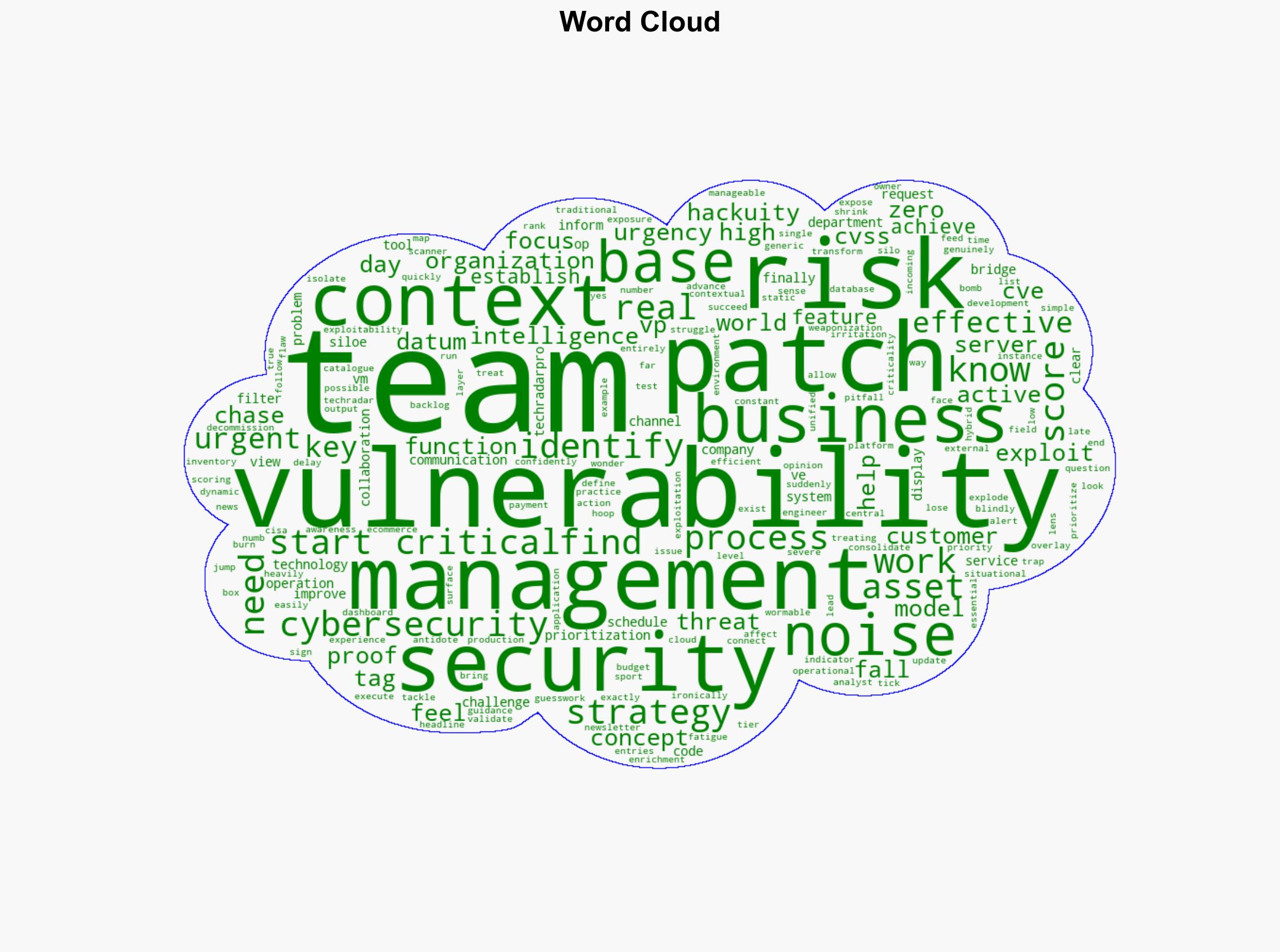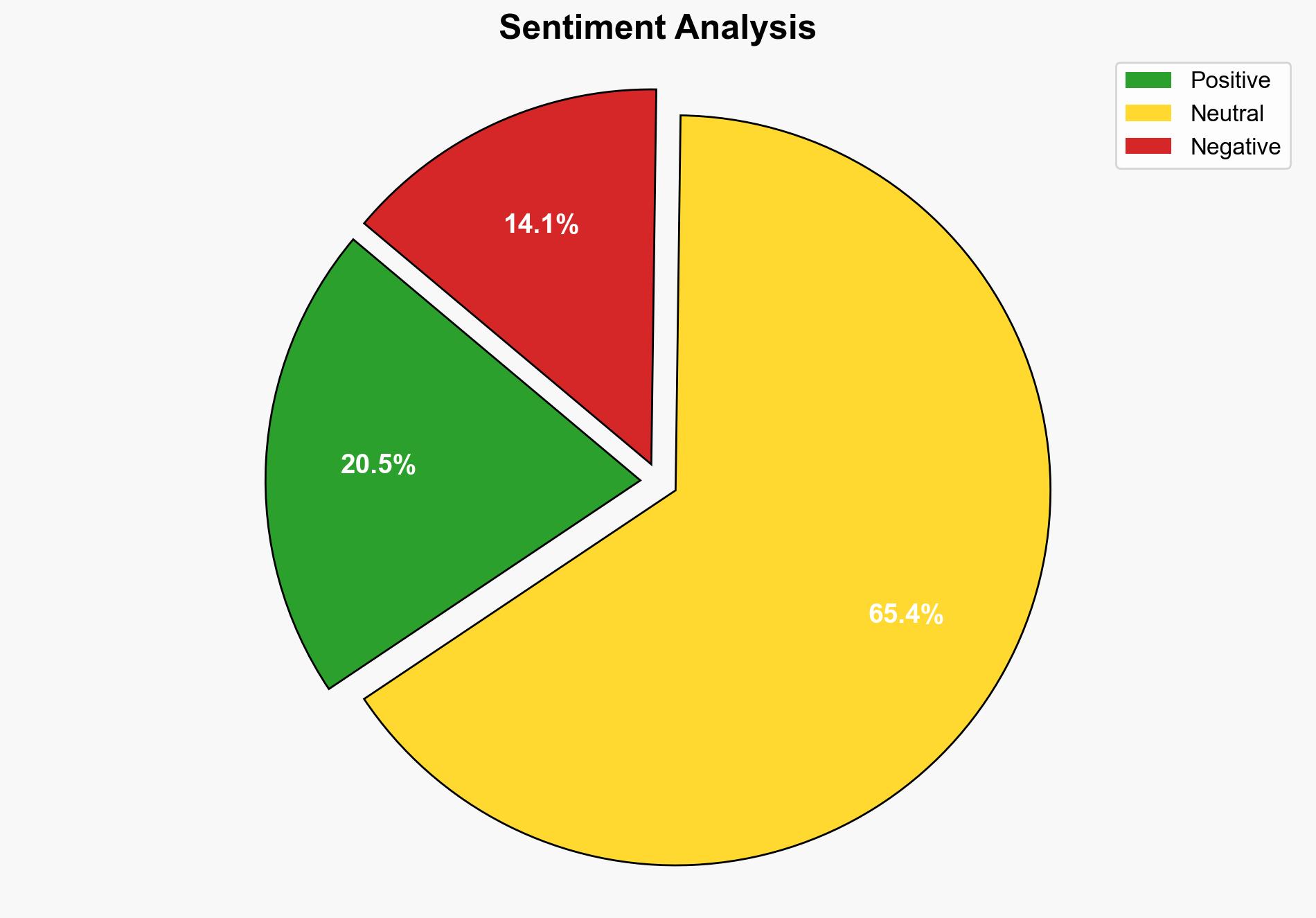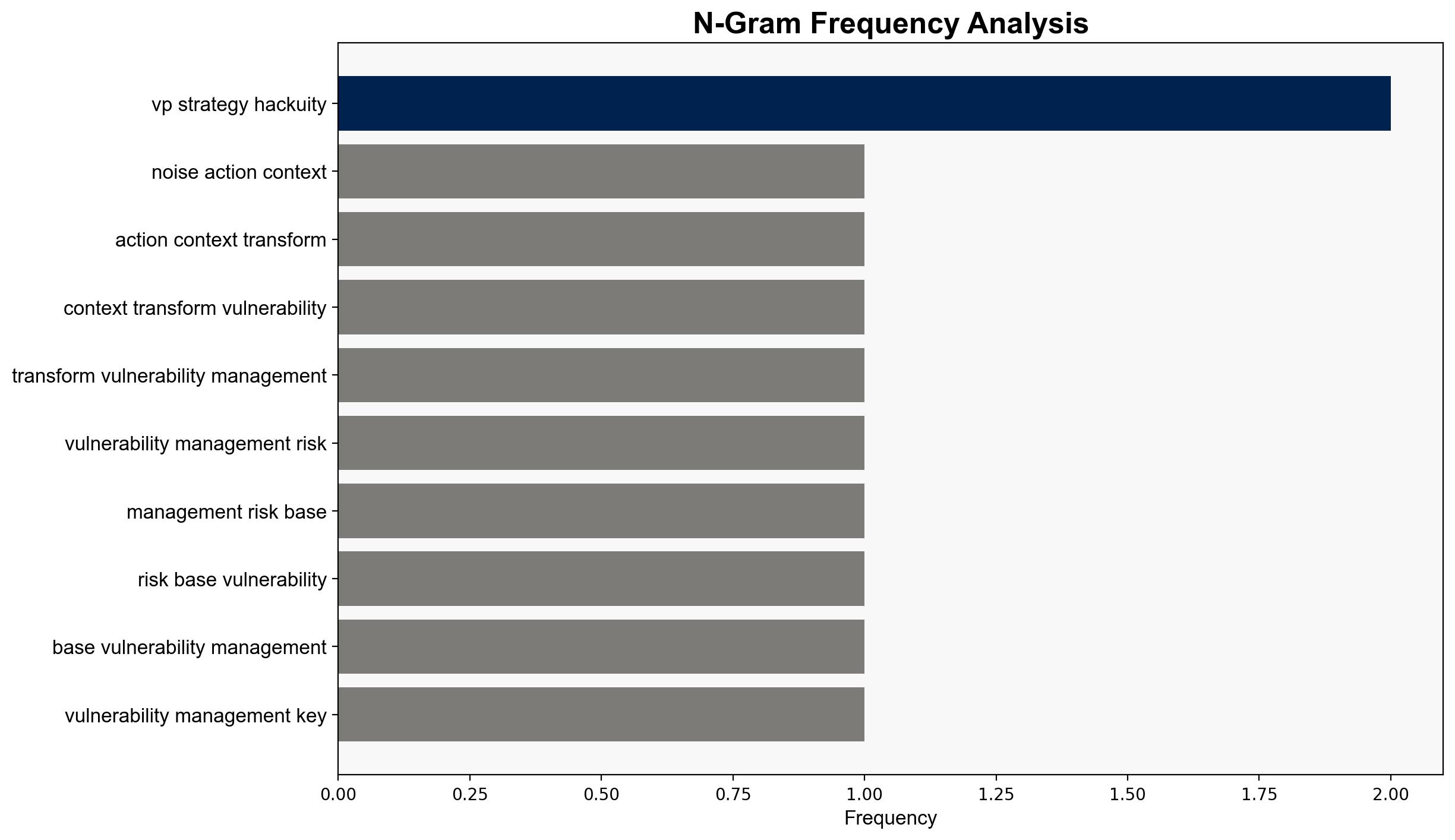From noise to action how context transforms vulnerability management – TechRadar
Published on: 2025-09-02
Intelligence Report: From noise to action how context transforms vulnerability management – TechRadar
1. BLUF (Bottom Line Up Front)
The most supported hypothesis is that risk-based vulnerability management, when contextualized with operational data, significantly enhances cybersecurity effectiveness by reducing alert fatigue and improving prioritization. Confidence Level: High. Recommended action is to implement a hybrid scoring model that integrates threat intelligence and business impact analysis to streamline vulnerability management processes.
2. Competing Hypotheses
Hypothesis 1: Risk-based vulnerability management, enhanced with contextual data, improves cybersecurity by prioritizing vulnerabilities that pose the greatest threat to business operations.
Hypothesis 2: Traditional vulnerability management models, focusing on high CVSS scores and zero-day vulnerabilities, remain effective and necessary due to their comprehensive coverage of potential threats.
Using the Analysis of Competing Hypotheses (ACH) 2.0, Hypothesis 1 is better supported. The integration of business context and threat intelligence provides a more nuanced understanding of risk, allowing for more efficient resource allocation and reducing unnecessary alerts.
3. Key Assumptions and Red Flags
Assumptions:
– Organizations have access to accurate and timely threat intelligence.
– Teams can effectively integrate business context into their vulnerability management processes.
– There is sufficient collaboration between security and operations teams.
Red Flags:
– Potential over-reliance on threat intelligence that may not be comprehensive or current.
– Assumption that all vulnerabilities can be accurately contextualized with business impact.
– Possible resistance from teams accustomed to traditional models.
4. Implications and Strategic Risks
The shift towards context-driven vulnerability management could lead to improved cybersecurity posture and resource optimization. However, failure to accurately contextualize vulnerabilities could result in critical threats being overlooked. Economic implications include potential cost savings from reduced alert fatigue and more efficient patch management. Cyber risks include the possibility of misjudging the severity of threats due to incomplete data.
5. Recommendations and Outlook
- Implement a hybrid scoring model that incorporates threat intelligence and business impact to prioritize vulnerabilities.
- Enhance collaboration between security and operations teams to ensure effective implementation of vulnerability management strategies.
- Best Case Scenario: Organizations achieve a streamlined vulnerability management process, reducing risk and operational costs.
- Worst Case Scenario: Misalignment between threat intelligence and business context leads to critical vulnerabilities being ignored.
- Most Likely Scenario: Gradual improvement in vulnerability management effectiveness as teams adapt to new models.
6. Key Individuals and Entities
No specific individuals are mentioned in the source text. The focus is on organizational strategies and processes.
7. Thematic Tags
cybersecurity, risk management, vulnerability management, threat intelligence, operational efficiency





